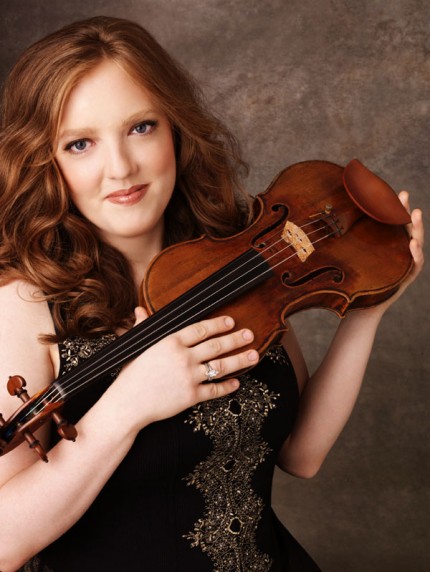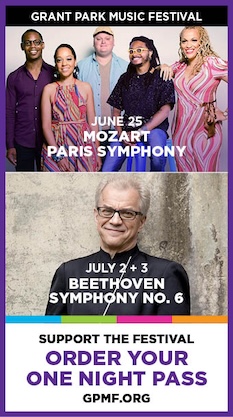Rachel Barton Pine brings bravura fire and scholarly depth to Ravinia recital

A tireless musician with a commitment to all aspects of her art, Rachel Barton Pine is a powerhouse performer, a serious student of the instrument’s history, and a fearless explorer of unknown repertoire. Undaunted by technical hurdles, she challenges her audience to follow in her explorations, successfully so judging by the enthusiastic response at her sold-out recital Thursday night in Ravinia’s Bennett Gordon Hall. The program’s dramatic journey was conveyed by Pine with deep understanding and a long acquaintance with the music. One could only sit back and enjoy.
Opening with a lesser-known Mozart Violin Sonata in two movements, K. 305, she and her responsive accompanist, Matthew Hagle, captured the style if not always the grace of this elegant piece of 18th-century chamber music. Pine positioned herself facing three-quarters away from her capacity audience, perhaps playing to the overflow on-stage seats or perhaps illustrating the role of the violin as secondary to the piano in this early sonata.
The Spanish composer Xavier Montsalvatge (1912–2002) was commissioned for a short work for violin and orchestra that could be substituted for the then-overplayed Chausson Poeme. He responded with the Poema Concertante, for violin and orchestra which is about the same length as the Chausson and displays many of the graces of that piece and as well as more modernist gestures.
Pine performed the work in an arrangement for violin and piano, which diluted some of its color and interest, but still achieved some lovely romantic moments as well as a great deal of virtuosic display. She negotiated the ups and downs of this variegated piece and nailed the stratospheric portions with silvery accuracy.
Heitor Villa-Lobos’s Violin Sonata No. 3 (1920) demonstrated another talent of Pine’s, her scholarly attention to editing of scores. She described her work on correcting the numerous mistakes of the available edition via a Facebook connection. The result is a full-on three-movement sonata, which lasts around 20 minutes and travels from the dark low-lying opening through declamatory and emphatic sections, shifting tonalities and a bravura finale. The artists met the challenges head on, but even this fine performance couldn’t quite make a case for this fairly conventional piece.
The second half of the program was reserved for two violin masterpieces and the electricity of the playing was ramped up appropriately.
A mere thirty years separates Brahms’ Violin Sonata No. 3 from the Debussy Violin Sonata but they inhabit different sound worlds not to mention divergent geographical imperatives. The Brahms is an extended piece of Germanic late romanticism while the Debussy is all Gallic modernist concision. Both are masterful in their own idioms and Pine approached both with a keen awareness of the distinctions.
For the Debussy she adopted a lighter, springier bowing, which captured the subtle but idiomatic delicacy of the score (the second movement is marked Fantasque et leger). Conversely she played the Brahms with the masterful intensity and solidity so characteristic of her performances of this repertoire in general.
The heft of her Guarneri del Gesu was immediately apparent in the opening cantabile of the Brahms, which can sound thin on other violins. Pine’s commentary about the provenance of her violin as the very one chosen by Brahms for the legendary violinist Marie Soldat only added to one’s appreciation of her performance. Throughout the sonata the depth and richness of the violin contributed immeasurably to the overall effect.
The switching of roles throughout the first movement gave a good deal of action to the piano and Hagle fulfilled his role with confidence. The cavatina of the second movement sounded gorgeous in its deep lyricism. The third movement unfolded playfully in the interaction between the two performers and the finale was taken impeccably at bravura speed.
For her encore, Pine offered the pyrotechnics of Bazzini’s showstopper Round of the Goblins. As Bazzini was an earlier owner of her well-travelled violin, a better ending could hardly be imagined.
Posted in Performances

